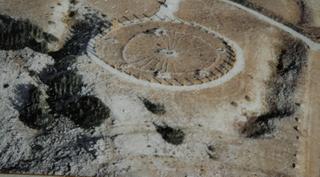
The Title, might seem somewhat strange, but a issue has developed for me that I see raised in the scourge of other intellectuals, who disavow the
extra dimension scenario.
So you have this view and you have this idea of
missing energy? Where did it go and where did it come from? Pierre Auger linked previously and the
Oh my god particle, raise this idea more in line with the vaster layout of this possibilty.
You see these things are happening around us now, and you needed a much comprehensive view of this compacted dynamcial world? So the methods seen for determination help us to see what is happening in relation not only to particle reductionistic views, but of the relationship happening with Earth and the Sun. Our other Cosmic relations, that move here in the vast network of spacetime contortions that signal informative views from earlier times

ATLAS and the LHC
Describing the strong, weak and electromagnetic interactions in terms of gauge theories, the Standard Model (SM) of fundamental particles and their interactions has successfully explained and predicted many aspects of high-energy particle interactions. However, despite its tremendous successes, it remains theoretically unsatisfactory. The SM cannot answer what is the origin of particle masses, contains a large number of arbitrary parameters, and does not explain why there are so many types of quarks and leptons, among other questions. Perhaps as much as theoretical breakthroughs are needed in order to improve the SM, so are experimental observations on phenomena which can further constrain the SM or may reveal physics beyond it.
The question I raised was in looking at where the missing energy had gone? This is a important question, becuase it speaks to what energy gone in/out, as not being equal? I take it, that all particle reductionistic interpretations would have surmized it's energy value, and then, had something left over that is accoutable? How would you know it's missing?
Now I was looking a
Cabi's ole post and from it, this lead me to look at the title of the connected paper for consideration.

A Toroidal LHC ApparatuS Part of the counterpart of looking at particle creation would have been able to understand the part of the calorimeters that are used to measure the evidence produced. IN this context, it lead me to the Atlas information held at CERN. It also made me think of Glast determinations of early universe indications from the calorimeter located in the Glast satelitte. See the
Looking GlastA Higgs Mechanism for Gravity,
by Ingo KirschIn this paper we elaborate on the idea of an emergent spacetime which arises due to the dynamical breaking of diffeomorphism invariance in the early universe. In preparation for an explicit symmetry breaking scenario, we consider nonlinear realizations of the group of analytical diffeomorphisms which provide a unified description of spacetime structures. We find that gravitational fields, such as the affine connection, metric and coordinates, can all be interpreted as Goldstone fields of the diffeomorphism group. We then construct a Higgs mechanism for gravity in which an affine spacetime evolves into a Riemannian one by the condensation of a metric. The symmetry breaking potential is identical to that of hybrid inflation but with the non-inflaton scalar extended to a symmetric second rank tensor. This tensor is required for the realization of the metric as a Higgs field. We finally comment on the role of Goldstone coordinates as a dynamical fluid of reference.
Now I have not gone into in detail because I am somewhat slow and a bottom feeder trying very hard to gain perspective of the world these fellows like to deal with.
So the water symbolically speaking,
sound manifest, with those inhabiting a dynamical world, speak about the nature of matter constitutions. That come from some state of existance? Here the idea, that it could emerse from nothing (where do the graviton perceptions reside?), is again hard to swallow becuase, "preconstitutional states," had allowed such manifestations to emerge from something? It just seemed logical? Non!
When you think this is going to be the end of it, I thought, I would recap, because I have given the containment(calorimetric) that such particle views, or early universe connections, might have brought forward in detectors methods?
This would have satisfied Peter Woit I am sure, but this view is far from over. The rules have defined a greater context to the issue that points us to the deeper issue of what Gerard 't Hooft might have said was comprehensible features of computerized information consistancies. This would have been far from the truth. Blackhole particle production, would have said hold on? To have this comprehensive view, you needed to include a completed version of the standard model? Without the grvaiton in cvomputerized versions you see where the picture is far completed and you se where the extra dimensiona would have certain features that would have incorporated graviton perceptions in the bulk?

The horizon would have been far from complete had the standard model not included this into the the energy in/out version. This would have been the thread(string) that connected the innner space of the blackhole with the particle production that would have dissipated/exploded in view? How would computerization meet this demand? LIGO?












